Zeyang Lei
Where to Go for the Holidays: Towards Mixed-Type Dialogs for Clarification of User Goals
Apr 15, 2022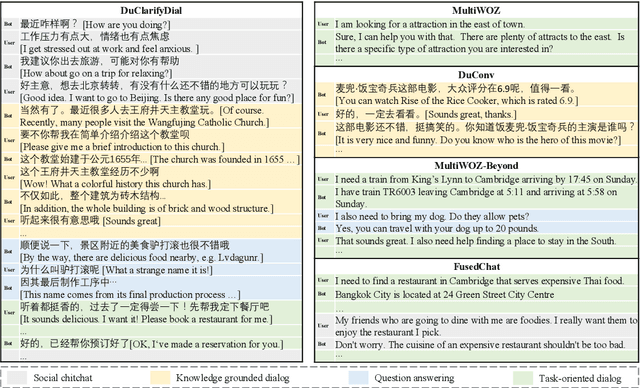
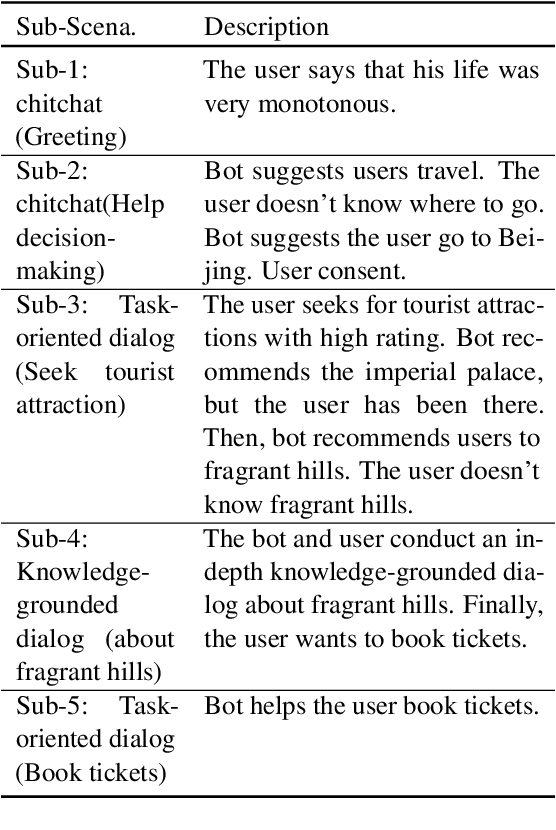
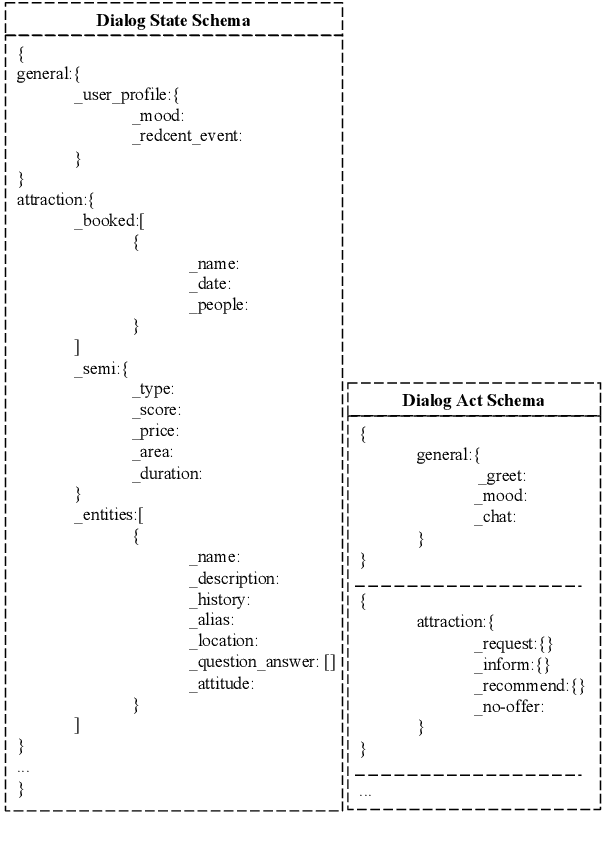
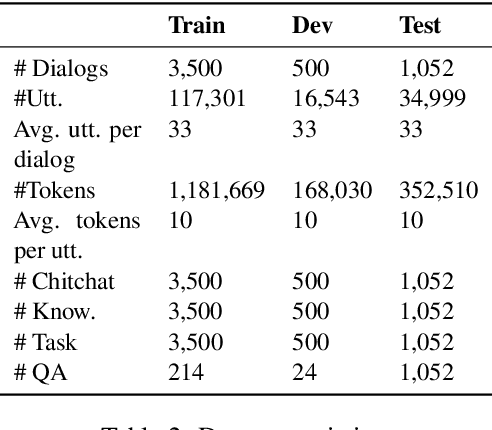
Abstract:Most dialog systems posit that users have figured out clear and specific goals before starting an interaction. For example, users have determined the departure, the destination, and the travel time for booking a flight. However, in many scenarios, limited by experience and knowledge, users may know what they need, but still struggle to figure out clear and specific goals by determining all the necessary slots. In this paper, we identify this challenge and make a step forward by collecting a new human-to-human mixed-type dialog corpus. It contains 5k dialog sessions and 168k utterances for 4 dialog types and 5 domains. Within each session, an agent first provides user-goal-related knowledge to help figure out clear and specific goals, and then help achieve them. Furthermore, we propose a mixed-type dialog model with a novel Prompt-based continual learning mechanism. Specifically, the mechanism enables the model to continually strengthen its ability on any specific type by utilizing existing dialog corpora effectively.
Discovering Dialog Structure Graph for Open-Domain Dialog Generation
Dec 31, 2020
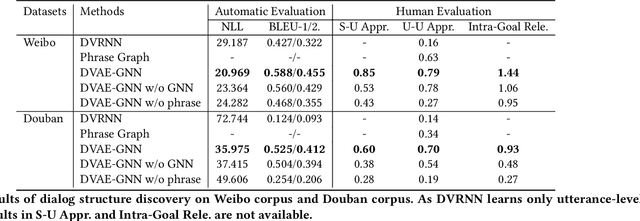
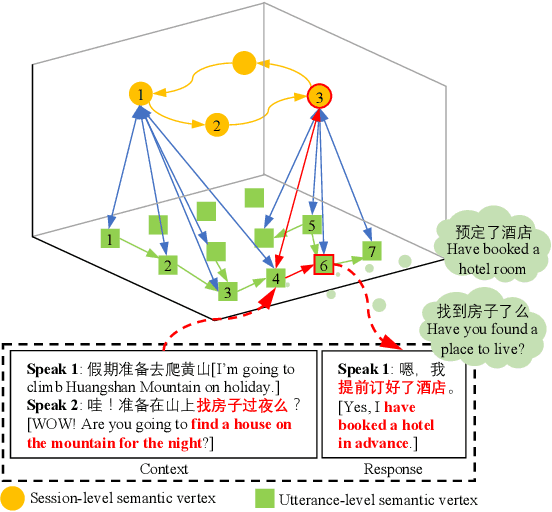
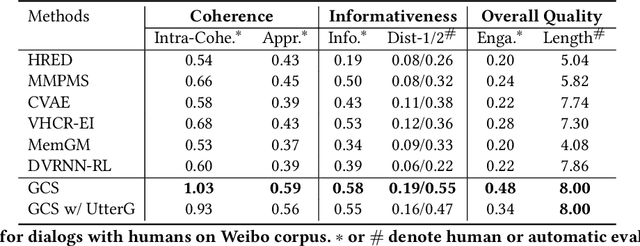
Abstract:Learning interpretable dialog structure from human-human dialogs yields basic insights into the structure of conversation, and also provides background knowledge to facilitate dialog generation. In this paper, we conduct unsupervised discovery of dialog structure from chitchat corpora, and then leverage it to facilitate dialog generation in downstream systems. To this end, we present a Discrete Variational Auto-Encoder with Graph Neural Network (DVAE-GNN), to discover a unified human-readable dialog structure. The structure is a two-layer directed graph that contains session-level semantics in the upper-layer vertices, utterance-level semantics in the lower-layer vertices, and edges among these semantic vertices. In particular, we integrate GNN into DVAE to fine-tune utterance-level semantics for more effective recognition of session-level semantic vertex. Furthermore, to alleviate the difficulty of discovering a large number of utterance-level semantics, we design a coupling mechanism that binds each utterance-level semantic vertex with a distinct phrase to provide prior semantics. Experimental results on two benchmark corpora confirm that DVAE-GNN can discover meaningful dialog structure, and the use of dialog structure graph as background knowledge can facilitate a graph grounded conversational system to conduct coherent multi-turn dialog generation.
Towards Multimodal Response Generation with Exemplar Augmentation and Curriculum Optimization
Apr 26, 2020



Abstract:Recently, variational auto-encoder (VAE) based approaches have made impressive progress on improving the diversity of generated responses. However, these methods usually suffer the cost of decreased relevance accompanied by diversity improvements. In this paper, we propose a novel multimodal response generation framework with exemplar augmentation and curriculum optimization to enhance relevance and diversity of generated responses. First, unlike existing VAE-based models that usually approximate a simple Gaussian posterior distribution, we present a Gaussian mixture posterior distribution (i.e, multimodal) to further boost response diversity, which helps capture complex semantics of responses. Then, to ensure that relevance does not decrease while diversity increases, we fully exploit similar examples (exemplars) retrieved from the training data into posterior distribution modeling to augment response relevance. Furthermore, to facilitate the convergence of Gaussian mixture prior and posterior distributions, we devise a curriculum optimization strategy to progressively train the model under multiple training criteria from easy to hard. Experimental results on widely used SwitchBoard and DailyDialog datasets demonstrate that our model achieves significant improvements compared to strong baselines in terms of diversity and relevance.
HSCJN: A Holistic Semantic Constraint Joint Network for Diverse Response Generation
Jan 20, 2020



Abstract:The sequence-to-sequence (Seq2Seq) model generates target words iteratively given the previously observed words during decoding process, which results in the loss of the holistic semantics in the target response and the complete semantic relationship between responses and dialogue histories. In this paper, we propose a generic diversity-promoting joint network, called Holistic Semantic Constraint Joint Network (HSCJN), enhancing the global sentence information, and then regularizing the objective function with penalizing the low entropy output. Our network introduces more target information to improve diversity, and captures direct semantic information to better constrain the relevance simultaneously. Moreover, the proposed method can be easily applied to any Seq2Seq structure. Extensive experiments on several dialogue corpuses show that our method effectively improves both semantic consistency and diversity of generated responses, and achieves better performance than other competitive methods.
Investigating Capsule Networks with Dynamic Routing for Text Classification
Sep 03, 2018
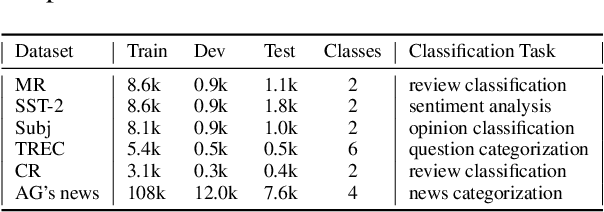
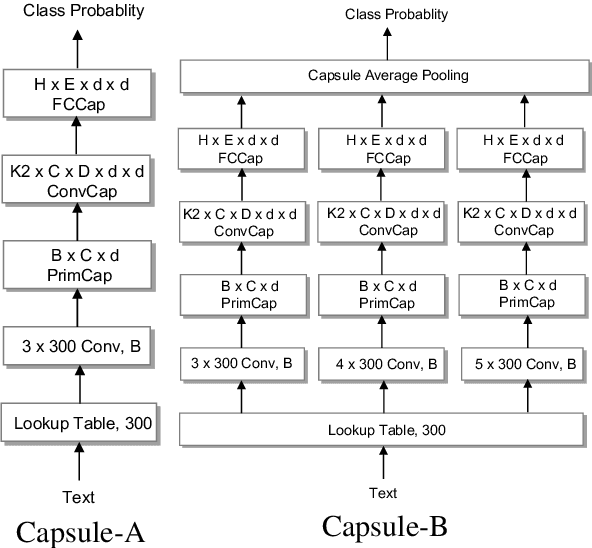
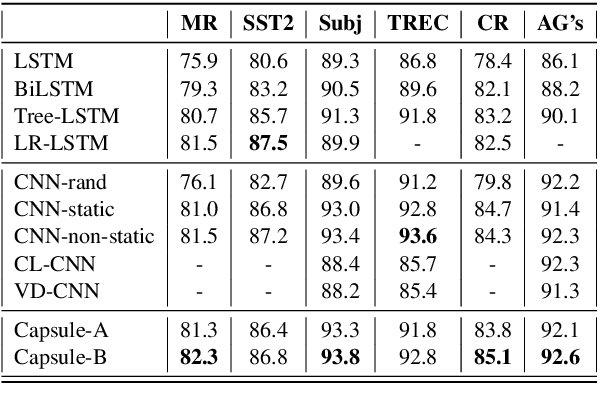
Abstract:In this study, we explore capsule networks with dynamic routing for text classification. We propose three strategies to stabilize the dynamic routing process to alleviate the disturbance of some noise capsules which may contain "background" information or have not been successfully trained. A series of experiments are conducted with capsule networks on six text classification benchmarks. Capsule networks achieve state of the art on 4 out of 6 datasets, which shows the effectiveness of capsule networks for text classification. We additionally show that capsule networks exhibit significant improvement when transfer single-label to multi-label text classification over strong baseline methods. To the best of our knowledge, this is the first work that capsule networks have been empirically investigated for text modeling.
A Multi-sentiment-resource Enhanced Attention Network for Sentiment Classification
Jul 13, 2018

Abstract:Deep learning approaches for sentiment classification do not fully exploit sentiment linguistic knowledge. In this paper, we propose a Multi-sentiment-resource Enhanced Attention Network (MEAN) to alleviate the problem by integrating three kinds of sentiment linguistic knowledge (e.g., sentiment lexicon, negation words, intensity words) into the deep neural network via attention mechanisms. By using various types of sentiment resources, MEAN utilizes sentiment-relevant information from different representation subspaces, which makes it more effective to capture the overall semantics of the sentiment, negation and intensity words for sentiment prediction. The experimental results demonstrate that MEAN has robust superiority over strong competitors.
 Add to Chrome
Add to Chrome Add to Firefox
Add to Firefox Add to Edge
Add to Edge